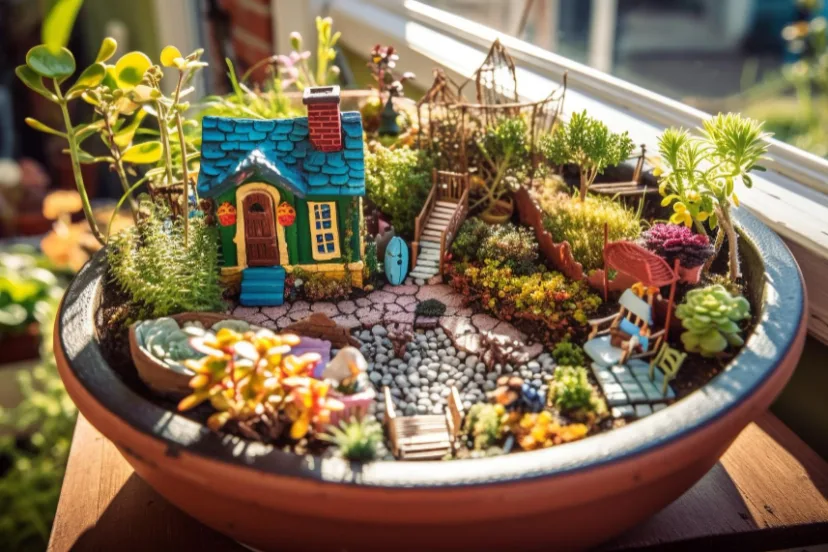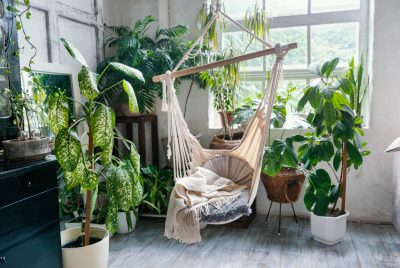Fairy garden: Types of Plants to Use
Deprecated: The PSR-0 `Requests_...` class names in the Requests library are deprecated. Switch to the PSR-4 `WpOrg\Requests\...` class names at your earliest convenience. in /home/littlegr/public_html/wp-includes/class-requests.php on line 24
Creating a fairy garden is like embarking on a magical journey, where miniature worlds come to life, and enchantment awaits at every turn. To capture the whimsical feel and captivating allure of fairy gardens, the key lies in the choice of plants. In this guide, I’ll walk you through the enchanting world of fairy gardens, shedding light on what defines them and offering valuable insights into the types of plants that can transform your garden into a mystical haven.
What is a Fairy Garden?
It is a miniature, enchanted world created in outdoor or indoor spaces such as in pots or containers, designed to evoke the magical allure of fairies. These whimsical landscapes typically feature tiny plants, decorative elements, and accessories, resembling a scaled-down version of a natural garden. The concept is to craft a space that invites the imagination, where fairies are believed to reside and frolic.
In a fairy garden, you’ll often find elements such as small cottages, miniature furniture, and stone pathways, all surrounded by carefully chosen plants to create a captivating, fantastical environment. The charm of a fairy garden lies not only in the visual aesthetics but also in the imaginative escape it provides for enthusiasts of all ages. It’s a delightful way to bring a touch of magic and whimsy into your surroundings, encouraging creativity and a sense of wonder.
Choosing the Right Plants
Now, let’s talk about the heart of any fairy garden—the plants. These tiny landscapes demand careful consideration when it comes to choosing greenery. The goal is to create an environment that not only flourishes but also exudes an otherworldly charm.
Choose dwarf species, and prune the branches so that it looks like little “trees”. Here are some plant suggestions to sprinkle a touch of magic into your fairy garden:
Ferns: Delicate Fronds of Elegance
Ferns, in general, are known for their lush, green foliage and adaptability to various environments. In a fairy garden, the choice of ferns with finely divided and delicate fronds helps create a sense of fantasy and complements the miniature scale of the garden. Choose fern species with delicate, feathery fronds that can add an ethereal touch, creating a soft, enchanting backdrop. Their lacy appearance brings a sense of whimsy, perfectly complementing the magical ambiance.
There are many different fern species with a variety of frond sizes and colors. Try to experiment with a few species that suits where you want to create your fairy garden (outdoor or container fairy garden requires different fern species!). You will need to start with your tallest element first, so that the eye is trained to look at it first before zooming into the other smaller intricacies in the foreground.
Petunias: Bursting Blooms in Every Hue
For a burst of color that rivals the most vibrant rainbows, consider planting smaller or more compact variety of petunias. These petite blooms come in a plethora of hues, from radiant reds to tranquil blues. These petite petunias are chosen to fit the scale of fairy gardens, where the goal is to create a magical and fantastical atmosphere, where your garden transforms into a kaleidoscope of colors.
Ground Cover: A Blanket of Magic
Choose plants that stay relatively low to the ground, creating a lush and green carpet. These plants serve both aesthetic and functional purposes in a fairy garden. They contribute to the overall charm by providing a verdant foundation for other miniature elements like tiny cottages, pathways, and fairy figurines. Additionally, they can mimic the appearance of a cozy retreat for the imaginary inhabitants, enhancing the magical ambiance. Common choices might include varieties of creeping thyme, ground cover sedums, microclovers, or small-scale grasses.
Mosses are also good alternatives to consider because they prevent the soil from washing out all over the place! It also holds moisture in. As long as you see bare soil, simply just press in the moss to fill in those spaces. Some species includes Sagina subulata or commonly known as Irish moss, Scottish moss, health pearlwort. This moss is native to Europe, it can grow and form a thick dense mat and blooms small white flowers.
Ivy: Cascading Greenery for Vertical Charm
For vertical allure, introduce Hedera helix also known as common Ivy to your fairy garden. This cascading greenery not only adds a sense of height but also provides a mystical curtain for fairies to hide behind. It’s a wonderful choice for creating layers of foliage and adding depth to your garden.
Growing the Magic Within Your Own Fairy Garden
In terms of creating your own fairy gardens, the choice of plants is the key to unlocking the enchantment of these miniature landscapes. From the delicate ferns to the burst of color from petunias, each plant contributes to a symphony of charm. Don’t forget to add some miniature furniture to complement the plants such as toadstools, tiny benches and tables, furniture pieces that resemble tiny cottage or fairy house elements etc, to make your fairy garden come alive! If you have very limited space but still dream of having a miniature fairy landscape, you can create your little piece of wonderland in flower boxes or hanging baskets. Be creative and let your imagination run as you bring some touch of magic into your garden!
Need more ideas for your own fairy garden? This YouTube video is excellent in sharing what containers you can easily upcycle around the house! Remember to also add in rock elements, and miniature patio furniture to complete the look!
FAQs
- Can I use any plants in a fairy garden, or are there specific ones that work best?
- While you can experiment with different plants, choosing those with a small size and whimsical appeal, like fairy ferns and pixie petunias, enhances the authenticity of your fairy garden.
- Do I need to create a specific layout for my fairy garden, or can I plant these enchanting plants anywhere?
- Creating a thoughtful layout adds to the magic. Consider placing gnome ground cover along pathways, enchanting ivy climbing vertical surfaces, and dwarf daisies as accents for a harmonious arrangement.
- How do I maintain a fairy garden? Are these plants high-maintenance?
- Fairy gardens are generally low-maintenance. Regular watering, occasional pruning, and ensuring adequate sunlight for the chosen plants suffice. They thrive best when given a bit of attention without overwhelming care.
- Can I incorporate other decorative elements besides plants in my fairy garden?
- Absolutely! Tiny cottages, miniature furniture, and whimsical accessories add layers of charm. Just ensure they blend seamlessly with the natural elements, creating a cohesive and enchanting miniature world.
- Are fairy gardens suitable for indoor spaces, or do they need to be outdoors?
- Fairy gardens can thrive both indoors and outdoors. If kept indoors, ensure your chosen plants receive adequate sunlight. Outdoors, they benefit from the natural elements, creating an even more authentic fairy haven.





